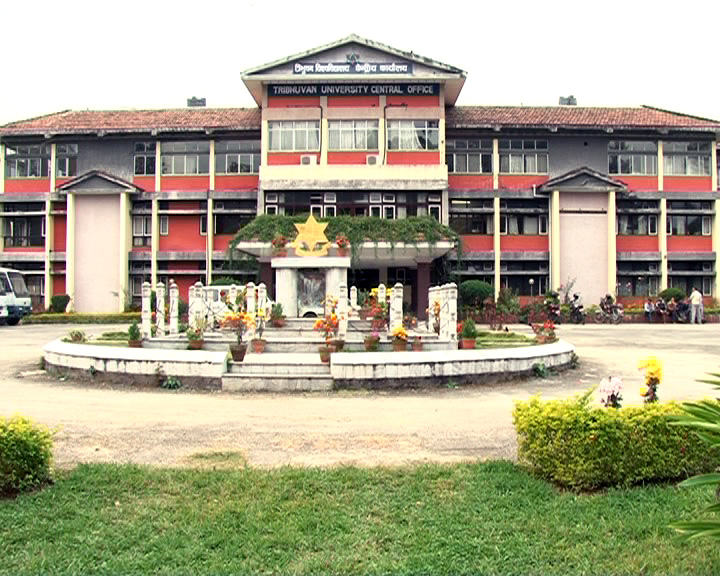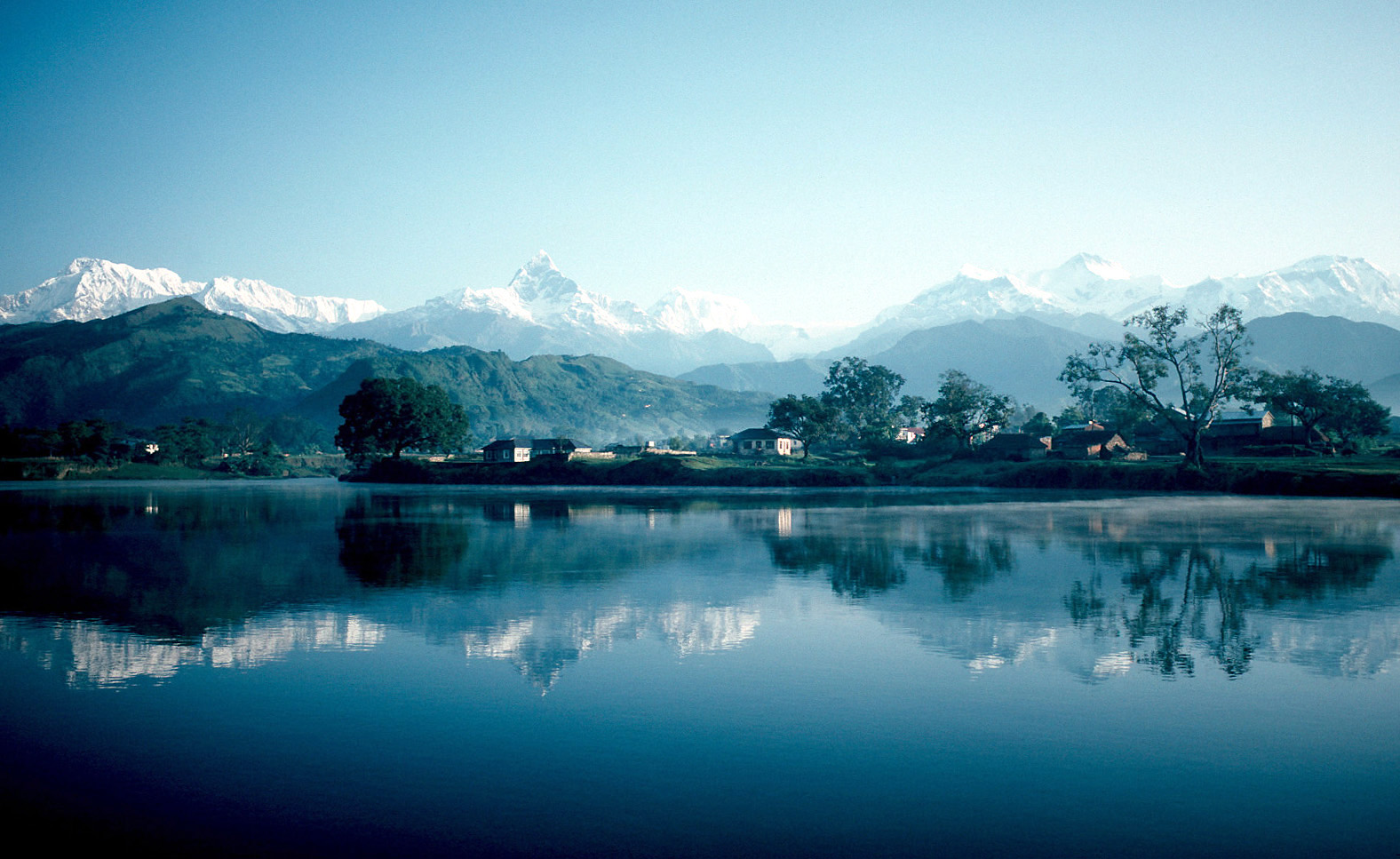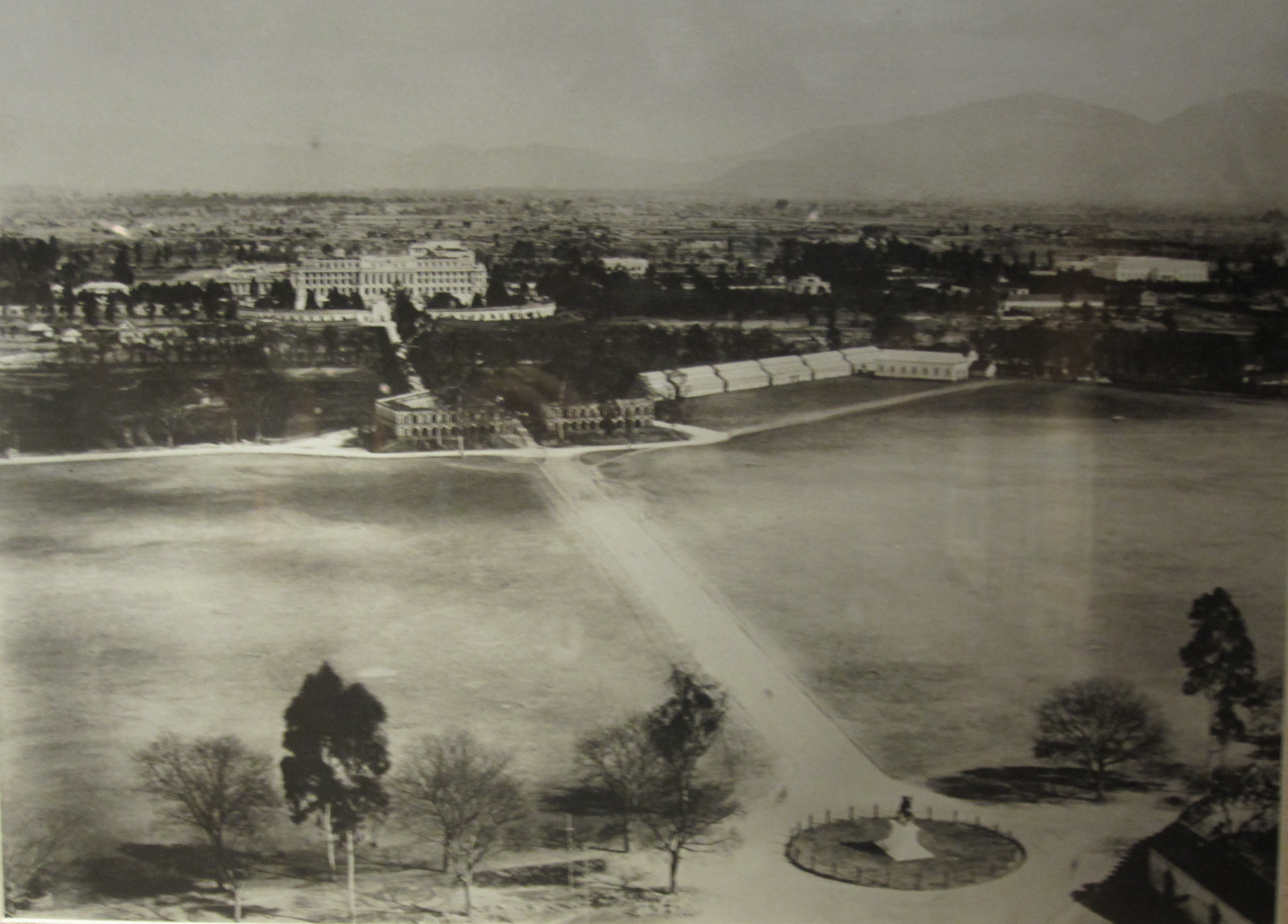|
Institute Of Forestry
The Institute of Forestry (IoF, ne, वन विज्ञान अध्ययन संस्थान) is one of the five technical institutes under Tribhuvan University, Nepal's largest academic institution. Under the Department of Forests, the IoF was founded as Nepal Forestry Institute in 1947 in Singha Durbar. However, it was relocated to Bhimphedi in 1957, then to Hetauda in 1965, before being incorporated into TU from 1972. The current head office of the institute, usually referred to as the ''dean's office'', is housed at Pokhara Campus. The IoF implements forestry-related academic programs through its two constituent campuses, located in Pokhara and Hetauda. The current dean of the institute is Bir Bahadur Khanal Chhetri, and he is backed by two assistant deans, presently Jit Narayan Sah and Mahendra Singh Thapa. See also The other technical institutes at TU are: * Institute of Agriculture and Animal Science * Institute of Engineering * Institute of Medicine ... [...More Info...] [...Related Items...] OR: [Wikipedia] [Google] [Baidu] |
Tribhuvan University
Tribhuvan University (TU; ne, त्रिभुवन विश्वविद्यालय) is a public university located in Kirtipur, Kathmandu. Established in 1959, TU is the oldest university in Nepal. In terms of enrollment, it is the 12th largest university in the world. The college offers 1000 undergraduate and 500 postgraduate programs across a wide range of disciplines. Additionally, the institution has 30 constituent campuses and over 600 affiliated colleges across the country. Because it is government-funded, the tuition fees are less expensive than those of private (affiliated) college campuses. History Established on 25 June 1959 (or 11 Ashar 2016 BS), Tribhuvan University is the oldest and largest university in Nepal. The university was named after the late King Tribhuvan. In its early years, all the postgraduate classes were held at Tripureshwor Campus. The administrative office was also located in Tripureshwor. It was only in 1967 that the university was ... [...More Info...] [...Related Items...] OR: [Wikipedia] [Google] [Baidu] |
Pokhara
Pokhara ( ne, पोखरा, ) is a metropolis, metropolitan city in Nepal, which serves as the capital of Gandaki Province. It is the List of cities in Nepal, second most populous city of Nepal after Kathmandu, with 518,452 inhabitants living in 101,669 households in 2021 Nepal census, 2021. It is the country's largest metropolitan city in terms of area. The city also serves as the headquarters of Kaski District. Pokhara is located west of the capital, Kathmandu. The city is on the shore of Phewa Lake, and sits at an elevation of approximately 822m. The Annapurna Range, with three out of the ten highest peaks in the world—Dhaulagiri, Annapurna, Annapurna I and Manaslu—is within of the valley. Pokhara is considered the tourism capital of Nepal, being a base for trekkers undertaking the Annapurna Circuit through the Annapurna Conservation Area region of the Annapurna ranges in the Himalayas. The city is also home to many of the elite Gurkha soldiers, soldiers native to So ... [...More Info...] [...Related Items...] OR: [Wikipedia] [Google] [Baidu] |
Hetauda
Hetauda ( ne, हेटौडा, ) is a sub-metropolitan city in the Makwanpur District of Bagmati Province in central Nepal. It is the administrative headquarters of the Makwanpur District and the capital of Bagmati Province as declared by majority (105 out of 110) Provincial Assembly Members on 12 January 2020. It is one of the largest cities of Nepal. At the time of the 2015 Nepal census, it had a population of 153,875 people. The city had a population of 195,951 in 2021. Hetauda sub-metropolitan city is situated in the confluence of the two prominent national highways viz. Tribhuvan highway and Mahendra highway. It was declared a municipality in 1969 A.D (2026 B.S), but development was sluggish. Momentum increased when the city became headquarters of the Makwanpur district in 1982A.D (2039 B.S). It is regarded as a "Green city" because the city has planted trees on either sides of the road. Hetauda is located at a distance of 76 km from the capital city, Kathmandu, ... [...More Info...] [...Related Items...] OR: [Wikipedia] [Google] [Baidu] |
Singha Durbar
Singha Durbar ( ne, सिंहदरवार, lit=Lion's Palace) is a palace in Kathmandu, the capital of Nepal. The palace complex lies in the centre of Kathmandu, to the north of the Babar Mahal and Thapathali Durbar and east of Bhadrakali Temple. This palace was built by Chandra Shumsher JBR in June 1908. The palace used to be one of the most exquisite and lavish of palaces in the world until the 1950s. Today it houses buildings of the Nepali Government, including the Pratinidhi Sabha, the Rastriya Sabha and several ministries. History Singha Durbar was built by Chandra Shumsher JBR immediately after accession to the post of Prime Minister. It was initially a small private residence but grew bigger during the construction. Immediately after construction, Chandra Shumsher JBR sold this property to the Government of Nepal for 20 million Nepali rupees as the official residence of Prime minister. After his death in 1929, it was used as the official residence of prime m ... [...More Info...] [...Related Items...] OR: [Wikipedia] [Google] [Baidu] |
Bhimphedi
Bhimphedi ( ne, भीमफेदी), is a village located in the Bhimphedi Rural Municipality of Makwanpur District of Bagmati Province of Nepal. This village is known for its bazaar (marketplace). Bismuth ore is mined here. Etymology The word "Bhimphedi" comes from the Sanskrit name ''Bhīma'' (one of the Pāṇḍava brothers mentioned in the ''Mahabharata'') and the Nepali word ''phedi'' which means the base of a hill. According to local beliefs, Bhīma and his brothers stayed in the forests near here during their time in exile, so the place was called Bhimphedi. History Before the construction of highways, goods from India were taken to the Kathmandu Valley through here. The first motor vehicles in Nepal were physically carried by teams of men through this village. This village served as the district headquarters of Makwanpur District before it was shifted to Hetauda. The village market suffered tremendously after the headquarters moved. Geography Bhimphedi is locat ... [...More Info...] [...Related Items...] OR: [Wikipedia] [Google] [Baidu] |
Institute Of Agriculture And Animal Science
Tribhuvan University's Institute of Agriculture and Animal Science (IAAS) is the oldest institute in Nepal which provides higher education in agriculture and animal science. Overview IAAS was founded in Kathmandu in 1957 as a school of agriculture to train junior technical assistants. In 1968, the school was upgraded to a college of agriculture. Four years later it became affiliated with Tribhuvan University (TU), and moved to Rampur, Chitwan in 1974. The institute's mission is to provide higher education in agriculture and agricultural development, focusing on teaching, research, and continuing education. The government of Nepal established the Agriculture and Forestry University (AFU) in Rampur in 2010, and AFU took over IAAS' physical plant and other assets. The IAAS dean's office moved to Kathmandu in 2011 and continues its programs and activities at satellite offices in Sanepa, Lalitpur and Kirtipur. The institute's postgraduate program was moved to Kathmandu in 2013, ... [...More Info...] [...Related Items...] OR: [Wikipedia] [Google] [Baidu] |
Institute Of Engineering
The Institute of Engineering (IOE) ( Nepali: ईन्जिनियरिङ अध्ययन संस्थान), established in 1930, is the first technical school of Nepal. It was reformed in the present shape in 1972 as an organ of Tribhuvan University. IOE runs professional diplomas, undergraduate, postgraduate and Ph.D. programs. The institute has four constituent and ten affiliated campuses in the country. It has five constituent campus namely Purwanchal Campus, Pashchimanchal Campus, Thapathali Campus, Pulchowk Campus and Chitwan Engineering Nepal History The history of engineering education in Nepal can be traced to 1930, when a Technical Training School was established. The engineering section of the school offered only trades and civil sub-overseers programs. In 1959, the Nepal Engineering Institute, with the assistance of the government of India, started offering civil overseer courses leading to a Diploma in Civil Engineering. The Technical Training Institu ... [...More Info...] [...Related Items...] OR: [Wikipedia] [Google] [Baidu] |
Institute Of Medicine, Nepal
Institute of Medicine (IoM), in the capital city Kathmandu, is the premier medical institution of Nepal. History The Institute of Medicine (IOM), established in 1972 at Tribhuvan University, was entrusted with the responsibility of training health care workers at all levels for the health care needs of Nepal. Within the first decade of its establishment, the IOM developed 12 campuses scattered over the country: three campuses in Kathmandu and nine outside the Kathmandu Valley. Initially, the emphasis of IOM was on the training of middle-level health workers. Programmes serving this purpose include ANM, CMA, Proficiency Certificate Course in General Medicine, Pharmacy, Radiology, Physiotherapy, Nursing, Health Laboratory and Traditional Medicine. The institutional goals of IOM have continued to change. The mission of the IOM expanded into training tertiary-level health professionals. By 1977 it had at the graduate level two-year Bachelor programmes in Community Nursing, Paediat ... [...More Info...] [...Related Items...] OR: [Wikipedia] [Google] [Baidu] |
Institute Of Science And Technology, Nepal
The Institute of Science and Technology (IoST, ne, विज्ञान तथा प्रविधि अध्ययन संस्थान) is one of the five technical institutes under Tribhuvan University, Nepal's largest academic institution. With 13 central departments, 25 constituent campuses, and 103 affiliated colleges, the IoST is one of the oldest and largest technical institutes of TU. The current dean of the institute is Binil Aryal, and his office is located in Kirtipur, Kathmandu. The primary function of the IoST is to implement and regulate college-level academic programs on various domains of science and technology in Nepal. Through its central departments and colleges, it offers BSc, MSc, and PhD programs across a wide array of scientific disciplines. The IoST has also given high priority to collaborative exchange programs in order to make faculty, research scholars, and students more competent. The institute collaborates with different ministries, nation ... [...More Info...] [...Related Items...] OR: [Wikipedia] [Google] [Baidu] |
Forestry Education
Forestry is the science and craft of creating, managing, planting, using, conserving and repairing forests, woodlands, and associated resources for human and environmental benefits. Forestry is practiced in plantations and natural stands. The science of forestry has elements that belong to the biological, physical, social, political and managerial sciences. Forest management play essential role of creation and modification of habitats and affect ecosystem services provisioning. Modern forestry generally embraces a broad range of concerns, in what is known as multiple-use management, including: the provision of timber, fuel wood, wildlife habitat, natural water quality management, recreation, landscape and community protection, employment, aesthetically appealing landscapes, biodiversity management, watershed management, erosion control, and preserving forests as " sinks" for atmospheric carbon dioxide. Forest ecosystems have come to be seen as the most important component o ... [...More Info...] [...Related Items...] OR: [Wikipedia] [Google] [Baidu] |
Forestry In Nepal
Nepal measures about along its Himalayan axis by across. It has an area of . Nepal is landlocked by China's Tibet Autonomous Region to the north and India on other three sides. West Bengal's narrow ''Siliguri Corridor'' separate Nepal and Bangladesh. To the east are Bhutan and India. Landform regions For a country of its size, Nepal has tremendous geographic diversity. It rises from as low as elevation in the tropical Terai—the northern rim of the Gangetic Plain, through beyond the perpetual snow line to 90 peaks over including Earth's highest ( Mount Everest or ''Sagarmatha''). In addition to the continuum from tropical warmth to cold comparable to polar regions, average annual precipitation varies from as little as in its narrow proportion of the rainshadow north of the Himalayas to as much as on windward slopes, the maximum mainly resting on the magnitude of the South Asian monsoon. Forming south-to-north transects, Nepal can be divided into three belts: Terai, ... [...More Info...] [...Related Items...] OR: [Wikipedia] [Google] [Baidu] |
1947 Establishments In Nepal
It was the first year of the Cold War, which would last until 1991, ending with the dissolution of the Soviet Union. Events January * January–February – Winter of 1946–47 in the United Kingdom: The worst snowfall in the country in the 20th century causes extensive disruption of travel. Given the low ratio of private vehicle ownership at the time, it is mainly remembered in terms of its effects on the railway network. * January 1 - The Canadian Citizenship Act comes into effect. * January 4 – First issue of weekly magazine ''Der Spiegel'' published in Hanover, Germany, edited by Rudolf Augstein. * January 10 – The United Nations adopts a resolution to take control of the free city of Trieste. * January 15 – Elizabeth Short, an aspiring actress nicknamed the "Black Dahlia", is found brutally murdered in a vacant lot in Los Angeles; the mysterious case is never solved. * January 16 – Vincent Auriol is inaugurated as president of France. * January 19 – Ferry ... [...More Info...] [...Related Items...] OR: [Wikipedia] [Google] [Baidu] |




